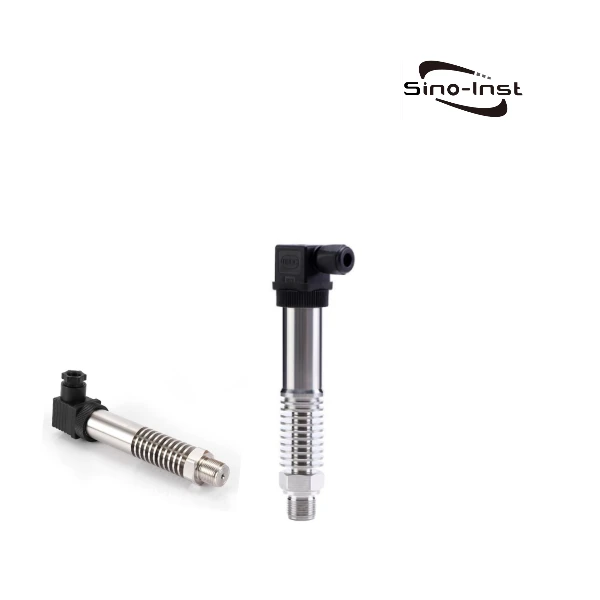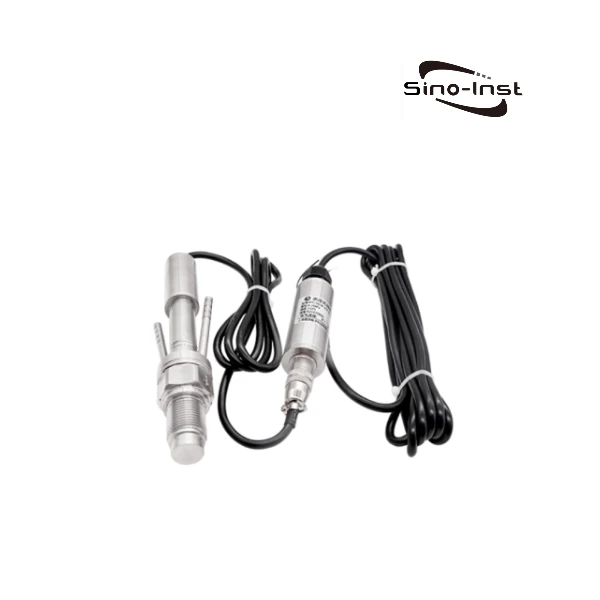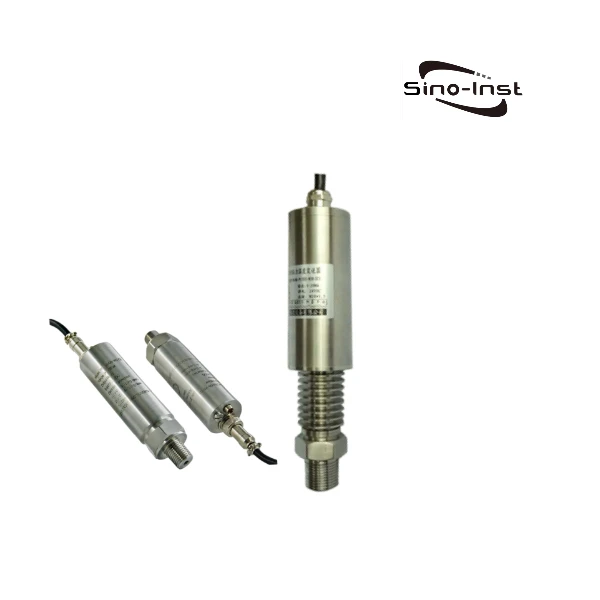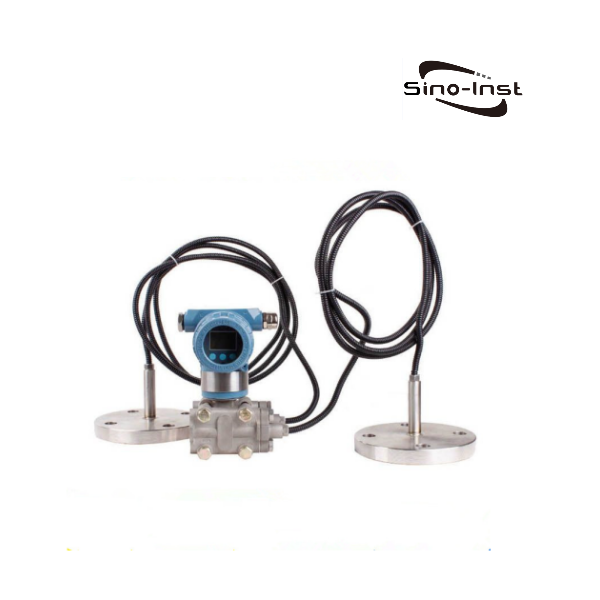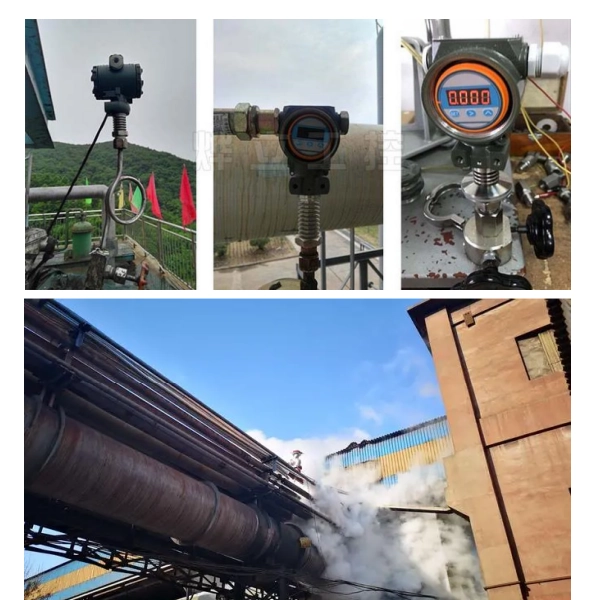
Steam Pressure Sensors also called Steam Pressure Transducers, play a pivotal role in modern industrial applications. In the world of steam boilers, the precise measurement of boiler pressure is paramount, and the differential pressure can make the difference between optimal output and system failure. As industries lean more towards digital solutions, these sensors provide clear and accurate pressure measurement, whether it’s vacuum conditions, bar metrics, or the intense high temperature pressure emanating from steam. Many steam pressure sensors now offer a standardized 4-20mA output, making integration with systems seamless.
Featured Steam Pressure Sensors-Transducers
Sino-Inst supplies more than 50 kinds of pressure sensors. Measuring range -100KPa…0~5KPa…100MPa. Support customized high pressure 200MPa, 600MPa, 700MPa. Materials include SS316L, Titanium, Tantalum, Hastelloy C, etc.
Sino-Inst also provides high temperature pressure sensors.
High temperature resistance 300℃~500℃~750℃~850℃~1200℃. Support customization, support OEM.
About Steam Temperature
Steam, as simple as it may seem, has variations that play crucial roles in various industrial processes. To truly grasp its impact, it’s essential to understand the specific temperatures associated with different types of steam. Let’s dissect the temperature nuances of regular steam, saturated steam, and superheated steam.
Regular Steam:
Temperature Characteristics: This is the basic form of steam we encounter daily, like when water boils in a pot. At standard atmospheric pressure, its temperature remains consistent at the boiling point of water, which is 100°C (212°F).
Measurement Features: Regular steam temperature can be gauged using standard sensors, but it’s pivotal that the sensor maintains consistent contact with the steam to get a true reading.
Saturated Steam:
Temperature Characteristics: This is steam that exists right at the boiling point for a specific pressure. For instance, if the pressure increases, the boiling point—and thus the temperature of the saturated steam—also rises.
Measurement Features: Given that saturated steam’s temperature is closely tied to its pressure, dual measurements of both pressure and temperature are typically taken in industries to guarantee accuracy.
Superheated Steam:
Temperature Characteristics: Here’s where things heat up, literally. Superheated steam is what you get when saturated steam undergoes additional heating, without a rise in pressure. This secondary heating can ramp up the steam’s temperature to significant highs, sometimes reaching up to 500°C. An added advantage? This steam boasts an impressive dryness fraction, often reaching a dryness of 98%.
Measurement Features: Capturing the temperature of superheated steam necessitates specialized sensors that can endure such intense heat. Precision is paramount here; even minor temperature fluctuations can drastically influence industrial applications.
In essence, while steam might seem universally the same, its temperature profiles differ considerably. In industry, recognizing these distinctions and accurately measuring them ensures both operational safety and optimal efficiency.
How are Pressure Transducers Protected from Steam at Higher Temperatures?
Steam’s power is undeniable, especially when it’s hot and roaring. But how do we measure its pressure without damaging the very tools we use? Enter pressure transducers—our unsung heroes. Let’s understand how they stay safe amidst steam at scorching temperatures.
Cooling Fins:
What are they?: Imagine the ridges or lines you see on some metal objects. Those are cooling fins.
How they help: These fins dissipate heat. When hot steam comes in contact with a transducer, these fins spread out the heat, cooling the device down and preventing damage.
Isolation Techniques:
What’s this?: Instead of letting the transducer face the steam directly, it’s kept separate or “isolated.”
How it’s done: Often, a barrier fluid or diaphragm is used. Hot steam heats this barrier, which then transmits pressure to the transducer—safely and without direct contact.
Materials Matter:
Choice of Material: Steam pressure sensor built for high temperatures are often made of materials that can handle the heat, like certain robust metals or ceramics.
Advantage: These materials don’t warp or degrade quickly, ensuring the transducer’s long life, even amidst hot steam.
In a nutshell, while steam’s high temperatures might seem like a challenge, ingenious engineering and thoughtful design ensure that pressure transducers can measure without missing a beat, no matter how hot things get.
Checklist for Steam Pressure Sensor Requirements
Choosing the right steam pressure sensor can seem like navigating a maze. But fear not! Here’s a simple, straightforward checklist to guide you in pinpointing exactly what you need:
- Pressure Range:
- What’s the minimum and maximum pressure the transducer needs to measure? Knowing your steam system’s limits is the first step.
- Voltage Output Type:
- Do you need a 4-20mA, 0-5V, 0-10V, or another type of output? Match this with your monitoring or control system.
- Accuracy Matters:
- How precise does your measurement need to be? Is a 1% error margin acceptable, or do you need something even tighter?
- Electrical Connection:
- Consider the setup. Do you require a simple plug, a specific connector, or a wire lead connection?
- Media Type:
- While we’re focusing on steam, ensure you specify this, especially if your provider offers transducers for multiple media types.
- Max Media Temperature:
- Steam can get really hot! What’s the highest temperature your transducer needs to withstand?
- Max Ambient Temperature:
- It’s not just the steam. The surrounding environment can also influence the transducer. What’s the highest ambient temperature where the device will be located?
- Process Connection:
- How will the transducer be connected to your steam system? Threaded connection, flange, or another method?
With this checklist in hand, you’re well on your way to finding a steam pressure sensor that fits your needs.
FAQ
More Pressure and Flow Measurement Solutions
Strap on Flow Meter Model X3
What Is a 4 to 20 Milliamp Signal?
How to Choose the Right Oil Pressure Transmitter for Your Application
Electromagnetic High Pressure Flowmeter | 0.6MPa-1.6MPa-6.3MPa-16MPa-25MPa-35MPa-42MPa
Gauge Pressure vs Absolute Pressure | Differences and Relationships
What Is Solvent Flow Meter? Industrial Selection Guide
In the intricate dance of industry, Steam Pressure Sensors/transducers play an understated but pivotal role. Ensuring safety, optimizing performance, and guaranteeing efficiency, these devices are the silent sentinels behind many of our daily comforts.
While we’ve delved deep into the world of Steam Pressure Sensors/transducers in this guide, it’s worth noting that steam’s journey doesn’t end with pressure. Steam Flow is equally vital. And for those looking to measure steam’s flow, we proudly present our range of steam flow meters, seamlessly integrating with our pressure solutions to give you a holistic steam management system.
At Sino-Inst, we’re not just another name in the industry. We’re seasoned manufacturers and suppliers with a rich legacy of excellence. Whether you need Steam Pressure Sensors/transducers or something tailor-made for your unique requirements, we’re here to help.
-1.jpg)
